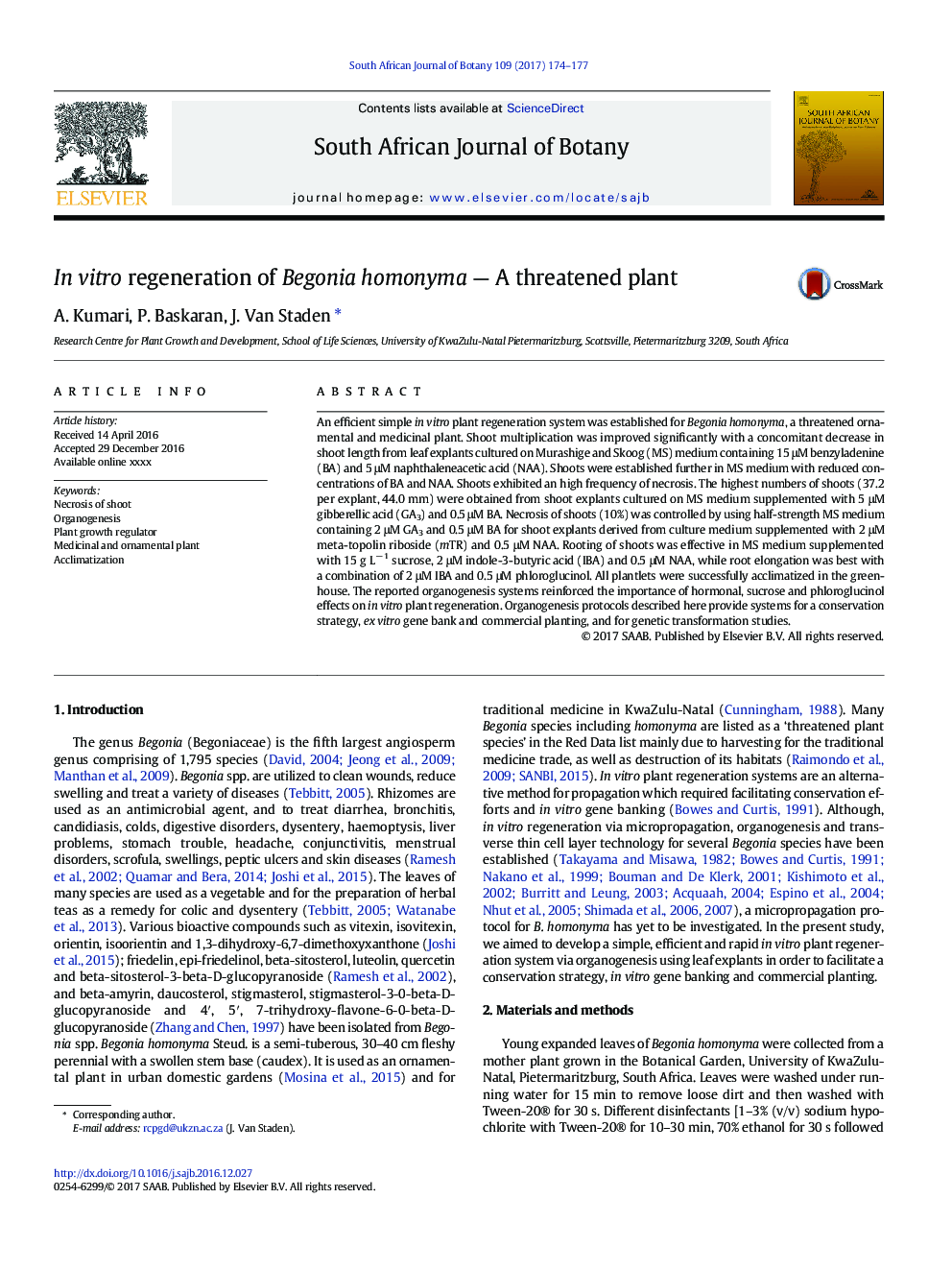| Article ID | Journal | Published Year | Pages | File Type |
|---|---|---|---|---|
| 5763043 | South African Journal of Botany | 2017 | 4 Pages |
Abstract
An efficient simple in vitro plant regeneration system was established for Begonia homonyma, a threatened ornamental and medicinal plant. Shoot multiplication was improved significantly with a concomitant decrease in shoot length from leaf explants cultured on Murashige and Skoog (MS) medium containing 15 μM benzyladenine (BA) and 5 μM naphthaleneacetic acid (NAA). Shoots were established further in MS medium with reduced concentrations of BA and NAA. Shoots exhibited an high frequency of necrosis. The highest numbers of shoots (37.2 per explant, 44.0 mm) were obtained from shoot explants cultured on MS medium supplemented with 5 μM gibberellic acid (GA3) and 0.5 μM BA. Necrosis of shoots (10%) was controlled by using half-strength MS medium containing 2 μM GA3 and 0.5 μM BA for shoot explants derived from culture medium supplemented with 2 μM meta-topolin riboside (mTR) and 0.5 μM NAA. Rooting of shoots was effective in MS medium supplemented with 15 g Lâ 1 sucrose, 2 μM indole-3-butyric acid (IBA) and 0.5 μM NAA, while root elongation was best with a combination of 2 μM IBA and 0.5 μM phloroglucinol. All plantlets were successfully acclimatized in the greenhouse. The reported organogenesis systems reinforced the importance of hormonal, sucrose and phloroglucinol effects on in vitro plant regeneration. Organogenesis protocols described here provide systems for a conservation strategy, ex vitro gene bank and commercial planting, and for genetic transformation studies.
Related Topics
Life Sciences
Agricultural and Biological Sciences
Agronomy and Crop Science
Authors
A. Kumari, P. Baskaran, J. Van Staden,
